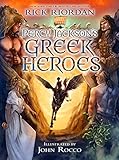Centuries Old Preserved Fruit Unearthed At George Washington's Home
Language
Reading Level
Listen to Article
Alignment

Archaeologists have found 35 glass bottles dating back to the 18th century in George Washington's Mount Vernon home. Twenty-nine bottles were intact and contained perfectly preserved cherries and berries, likely gooseberries or currants. The exciting discovery, announced on June 13, 2024, was made during the excavation of six storage pits in the cellar. The exercise is part of a $40 million revitalization project to preserve the historic Virginia mansion for future generations.
"Finding what is essentially fresh fruit, 250 years later, is pretty spectacular," said principal archaeologist Jason Boroughs. "All the stars sort of have to align in the right manner for that to happen."

The bottles were made in England in the mid-1700s. They were probably buried under the clay sometime before 1776. The bottles were likely forgotten after George Washington departed the mansion in 1775 to take command of the Continental Army during the American Revolution. The important artifacts provide a rare glimpse into the daily life and culinary practices of the Washingtons and the people around them.
"The bottles and contents are actually material items that were connected to real lives and real people in the past," said Boroughs. "They may have been intended for the Washingtons' table, but they were certainly picked and packaged and stored by members of the enslaved community here."

The preserved fruits were carefully removed and sent to scientists at the US Department of Agriculture for analysis. Initial reports suggest that the cherries were likely a tart variety. This may have helped preserve them.
Next, the team plans to extract DNA from the cherries and compare it to existing varieties. This would reveal the exact species the Washingtons enjoyed. The information could also provide valuable insights into how Virginia's climate has changed over time. Furthermore, the scientists plan to investigate if they can germinate any of the preserved cherry seeds. The resulting tree would serve as a living artifact of American history!
Resources: prnewswire.com, npr.com, CNN.com

Get the Workbook for this article!
Workbook contains: Article, Reading Comprehension, Critical Thinking Questions, Vocabulary in Context (+ answers), Multiple Choice Quiz (+ answers), Parts of Speech Quiz (+ answers), Vocabulary Game (+ answers)Cite Article
Learn Keywords in this Article
38 Comments
- chamoriakimble111 daysThis is the most interesting story I have ever heard.
- mywemeze-172486698235about 1 monththat is really cool i mean how can something be there for that long
- lukelande2 monthsIts crazy how stuff is kept for so long.
- dacaradafortine2 monthsI mean this is good thanks I'm using this for a project but I agree c_oreyf how aren't they modly after 250 years that's crazy!💀
- dog882 monthsi went there a week later, everyone was talking about it
- c_oreyf2 monthsaren't they moldy after 250 years?
- laylarory2 monthsNo, they are preseverd
- reliwopa-1724096432283 months#Cherries me want to eat
- reporterann3 monthsthat's so cooooooool!!!
- i_love_donkeys3 monthsthat is so cool
- i_love_donkeys3 monthsI would eat those cherries




